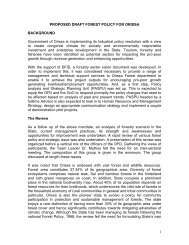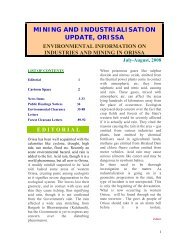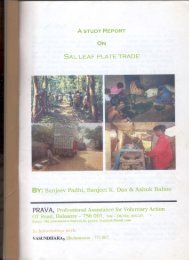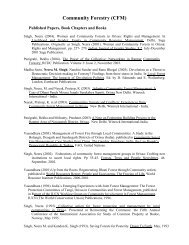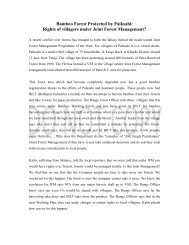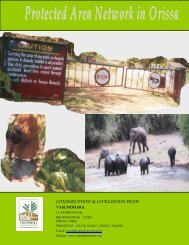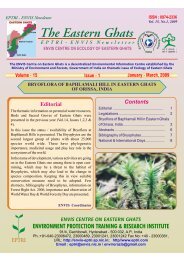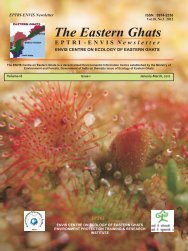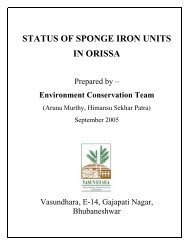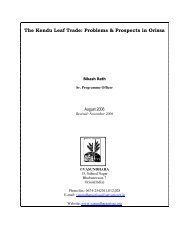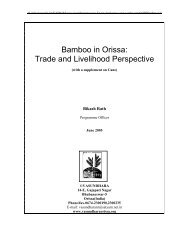DEVOLUTION OF FOREST MANAGEMENT - Vasundhara
DEVOLUTION OF FOREST MANAGEMENT - Vasundhara
DEVOLUTION OF FOREST MANAGEMENT - Vasundhara
- No tags were found...
You also want an ePaper? Increase the reach of your titles
YUMPU automatically turns print PDFs into web optimized ePapers that Google loves.
7they depended on the Amari branches from the riverbeds for cooking fuel. A few familiesdeveloped "Gobar gas" system under D.R.D.A. project but could not sustain because they did nothave requirement number of cattle.The Forest Department supported the forest protection effort by villagers by forming a VillageForest Protection Committee in the village as per the Government resolution of 1988in thisregard. After the JFM resolution of 1993, the Forest Department formed a Vana SamrakhanSamiti (VSS) in 1994 and entered into a Joint Forest Management arrangement with the village.3.2.2 Dynamic evolution of Forest Management GroupInitial initiative for forest protection came from the Harijan pada. After a few months, howeverthe entire village got involved. Within a brief period of three months after protection startedthere was an intrusion by two Agharia people who were caught red handed while cutting polesfrom the protected patch. The offenders were penalised. After this incident the entire villagedecided to join the protection effort.It is interesting to note that after this incident the Agarhias realised that they were being excludedfrom a potentially significant activity, and that their decision to join in was influenced by theneed to "regain" control over an important resource.3.2.3 Involvement of Bhugrapada in Forest Management Group:Bhugrapada, which consist of four hamlets, forms a major portion of Suruguda in terms ofhousehold and population. But it does not have any major link with the rest of the village otherthan the legal status. In the initial stage, the entire revenue village including Bhugrapada cametogether but after short period of time Bhugrapada broke away. Following factors may beattributed to this:• Bhugrapada is far off from the protected patch, which hindered the mobility of people, andhence they got disinterested.• Most of the households (nearly 163 out of 225) are landless and depends on daily wagelabour. Foregoing a day's work for patrolling spells a loss of earning for the day, which iscritical loss.• The Bhugrapada people could easily meet their needs from nearby forest patches to whichthey have unrestricted access.• Most of the household belong to the so-called lower caste and have little influence or say inthe village affairs. This has also proved to be a major obstacle in getting along with the restof the village.3.2.4 Inclusion of Milupada:Milupada does not come under the legal jurisdiction of Suruguda rather it is a hamlet of theadjoining Kolebira village. The significant thing about Milupada is its location (Refer to theresource map) which is highly strategic by virtue of its close proximity to the forest. It is a tribalhamlet and their degree of dependence on forest is much more. Their association is based on thefollowing reasons:• It was realised that inclusion of Milupada would enhance the effectiveness of themanagement system. Milupada's inclusion has actually enhanced the effectiveness of forestprotection.• Milupada decided to join in since that gave Milupada access to common resources ofSuruguda particularly the grazing land, since the grazing land is within the boundary ofSuruguda. Thus the whole affair was a matter of reciprocity.



